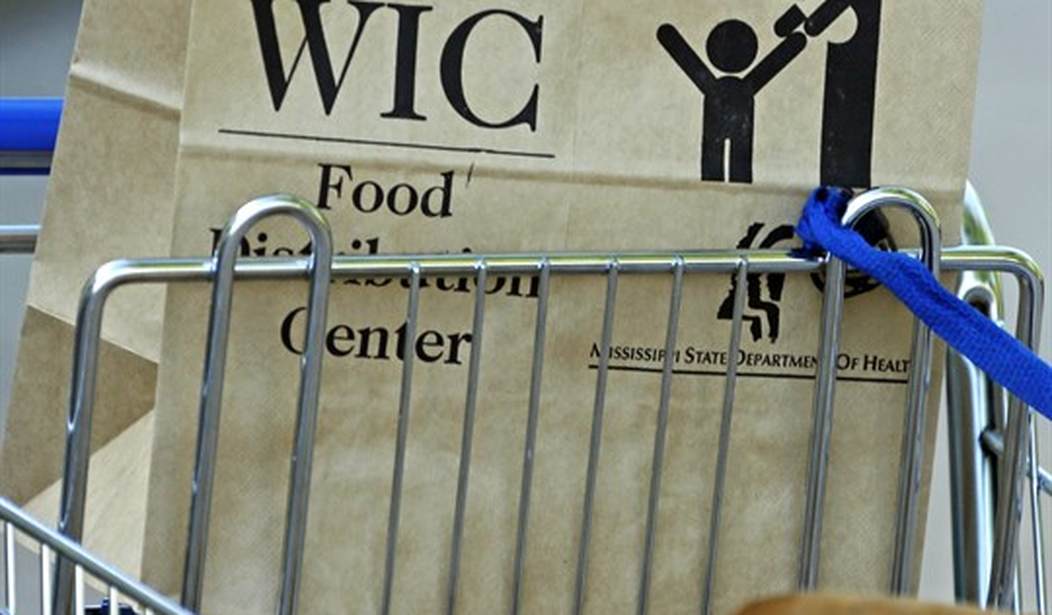Math, unfortunately for some of us, matters. And numbers, unfortunately for all of us, can mislead.
For example, President Biden’s recent $1.9 trillion “American Rescue Plan” was sold as a COVID-19 relief bill. But the bill provided less than $200 billion to actually fight the virus. Billions more will go toward new stimulus payments and expanded child tax credits in the months and years ahead.
Supporters call these provisions the new War on Poverty. And, just like the old War on Poverty, our eyes will look at the poverty rate as a scorecard. In the tornado of conjecture, opinion, and outright spin that has already begun, when we see quantifiable metrics like the poverty rate, we’ll grab them like helmets that can protect us in the whirlwind.
But the poverty rate can work less like a helmet and more like a tinfoil hat. It offers a false sense of security and skews our thinking.
Of course, it is worth asking: does our welfare spending actually reduce poverty?
But even more than flawed metrics like the unemployment rate or gross domestic product, the poverty rate has played a tragic role in American life. Between its design and our enduring desire to lower it, how could it not cause distortions?
Consider this: if the federal government cut a check for $1 million for every American who earned less than $100,000 a year, the poverty rate wouldn’t budge. What kind of measure of poverty is that?
Like a huckster wearing a fake firefighter’s uniform and pocketing the cash from a hustle on the side of a highway, the poverty rate twists the better angels of human nature. And it mirrors the failure of our government to lift people out of poverty with dependency, rather than self-sufficiency.
Despite its emotional charge, “poverty” does have a technical meaning. Very smart people in very large buildings in Washington, D.C. adjust it every year on a sliding scale. A single-person must make less than $12,760 per year to be in poverty. A two-person household must make less than $17,240. And so on.
Recommended
When you hear something like “200 percent of the federal poverty level” or FPL, those are the numbers being used. The official poverty rate, on the other hand, is the percentage of Americans falling below the FPL.
Here’s the issue: the FPL is tied to earned income, not resources. It’s a useful measure of economic engagement among lower-income Americans. But as a measure for deprivation—as we more often imagine the poverty rate to be—it is a true distortion.
Putting aside the latest trillions earmarked, consider the trillions spent on anti-poverty programs at every level of government since the Johnson administration’s Great Society agenda in 1965.
Consider the turbulence of the late 1960s, the energy crisis and stagflation of the 1970s, strong growth in the 1980s and 1990s, the end of the Cold War, the dot-com bubble, 9/11, the Great Recession, and the record stockmarket gains before the COVID-19 pandemic.
Despite all this spending and the ups-and-downs of economic turmoil, the poverty rate did not budge from a narrow band between 11.1 and 15.2 percent between 1969 and 2018.
How?
The Left often points to the stagnant number as proof that a little more compassion and a lot more spending is needed. The Right often shrugs fatalistically and wonders if the poor will simply always be with us.
Both attitudes are wrong because the measure is wrong.
Specifically, the FPL and poverty rate don’t count public assistance. An American who earns no income but who receive benefits from cash welfare, food stamps, public housing, and Medicaid—even direct cash benefits—in excess of the FPL is counted as “in poverty.”
Of course, not all dollars are created equal. Our measures of poverty should reflect that a distributed dollar is of less value than an earned dollar. Welfare is a temporary salve that should be protected for the truly needy. An earned dollar brings dignity, community bonds, and, of course, the promise of lasting independence from funds diverted from other taxpayers.
This is why the time has come for us to break the poverty rate into two separate measures—a deprivation rate and a self-sufficiency rate.
The deprivation rate would do what the poverty rate is often portrayed as doing—quantifying need in America. It would count income and resources, including public assistance, and measure how many Americans fall below the FPL.
The deprivation rate will be extremely low, perhaps less than 2 or 3 percent. The rate and the people it represents are worth our efforts. These efforts will look very different from massive, impersonal welfare programs. Personalized efforts are required to help in individual circumstances like voluntary homelessness, mental illness, or both. These problems are extremely difficult to fix and may, indeed, always be with us.
On the other hand, a self-sufficiency rate would flip the current poverty rate on its head. It would count only earned income, not public assistance, although it might count assistance tied to work like the earned income tax-credit or wage subsidies.
Where the current poverty rate is 10 percent the self-sufficiency rate will be about 90 percent.
This isn’t trivial. When we ask how we can raise the self-sufficiency rate rather than how we can lower the poverty rate, our answers will look different.
And for able-bodied Americans, the answer has always been work. We all understand that the best public policy is individual action.
By reorienting our metrics to reflect that truth, work requirements and time limits for the able-bodied on welfare will look more like the opportunities they are and less like a roadblock to benefits.
As the dollars start to pour out, now is the time to start counting differently.
Scott Centorino is a senior fellow at the Foundation for Government Accountability

























Join the conversation as a VIP Member